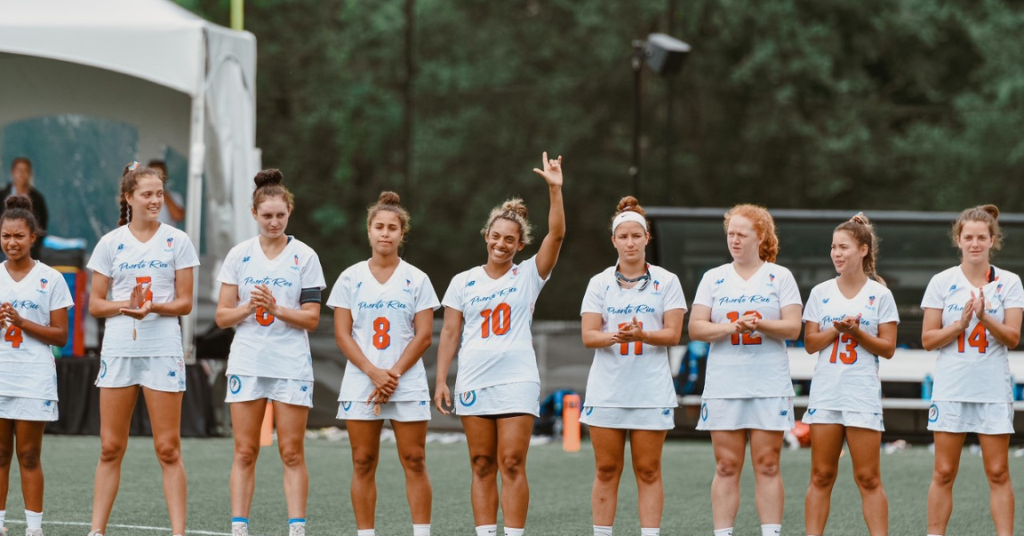
Deaf and hard of hearing characters in popular fiction
August 8, 2018
How Roger helps with my children’s listening fatigue
August 14, 2018How I communicate in sports with hearing loss

Sports are a huge part of our culture nowadays, whether you watch or play. Communication is a big part of sports, which differs for deaf and hard of hearing athletes, as they communicate visually when playing sports.
I played sports competitively my whole life, but that did not come without its obstacles. We, as deaf and hard of hearing individuals, like most things in our lives, have to learn to adjust some things when it comes to communication while playing the sport. How does one do that, and what does that mean exactly? For me, personally, visual cues help me the most. This includes reading the body language of others, mimicking movements of those around you, gesturing one direction or another, etc.
Swimming
There are some sports you can’t wear your hearing aids while you participate, like swimming.
If you’ve ever participated in a swimming event, you know there’s a beep/whistle that cues the start of the race. That system won’t exactly work for someone who can’t hear, right? There are waterproof hearing aids, but I hated them and refused to wear them.
Alas, we had to figure out a way for me to get the starting memo. Before every race, we (my coach, my mom, and sometimes me) would approach the starting official. We would politely ask them to wave their arm down (a la racing flag style) at the same time the whistle was blown. It felt odd to be the person that changed the system for one race, but I loved to swim. I wasn’t going to let one small thing stop me from competing.
Tennis
In tennis, I often struggled to hear what the coach was telling me across the court in lessons, especially if he was too far away for me to read his lips. I would read his body language to understand what he was telling me. If he moved his grip around on his racket, that usually meant I needed to adjust mine. Tossing his hand up meant I needed to toss the ball higher on my serve. In most drills, I would follow behind someone, so I could visually see what I was supposed to do.
Soccer
In soccer, communication is crucial! I remember my coach repeatedly drilling us about communicating with each other. Shout ‘man on’, ‘out wide’, ‘up top’, ‘ball back’, anything so your teammates are aware of what’s happening around them.
While there are plays in soccer, it’s not operated the same way as football where you call out the play in a huddle, so some type of communication is perhaps the biggest fundamental. I used to have mild freakouts when I lost the ball. I would blame it on the fact that I couldn’t always hear someone coming up behind me or someone yelling at me from across the field.
I worried my teammates would fault me for that miss. It was even worse when it would rain, and I had to take my hearing aids out. There have definitely been a few games where I couldn’t see because of the rain, and I couldn’t hear. Talk about a predicament! Because I couldn’t always hear, I had to train myself (still working on this) to keep my head up and always be on the lookout.
Other sports
I, personally, have never played basketball, American football, or baseball, but the latter is perhaps one of the most known sports to use ‘signs’ to communicate certain plays.
The American football circular formation huddle was created at the Deaf university, Gallaudet University in 1892. The quarterback Paul Hubbard created it when he played, to avoid sharing their plays with the other team. The circular formation allowed for only teammates to see signs and to communicate effectively.
Somewhat similarly, the point guard in a basketball game generally uses a number count to signal a certain play. It makes you wonder why all sports don’t adopt this form of communication more often. Visual cues are vital to everyone playing the sport. Why not adhere to that more by using signals more often?
Read more: How to handle communication in water sports when the hearing devices come off
That being said, what I love about sports is how visual they are. For most of us that are deaf or hard of hearing rely heavily on visuals. We are really grateful to have something that can work to our strengths more than it does to our weaknesses.
“We are really grateful to have something that can work to our strengths more than it does to our weaknesses.”
Communication in sport is all about creating awareness around you and with your teammates to make sure you’re on the same page. Keep in mind that what works for me may not work for you, and it may take some trial and error to figure out the best ways to interact with others in athletics. In the end, the rewards from competing in an organized sport far outweigh the challenges we face as deaf and hard of hearing athletes.
What tips and tricks do you have for communicating while playing a sport?







